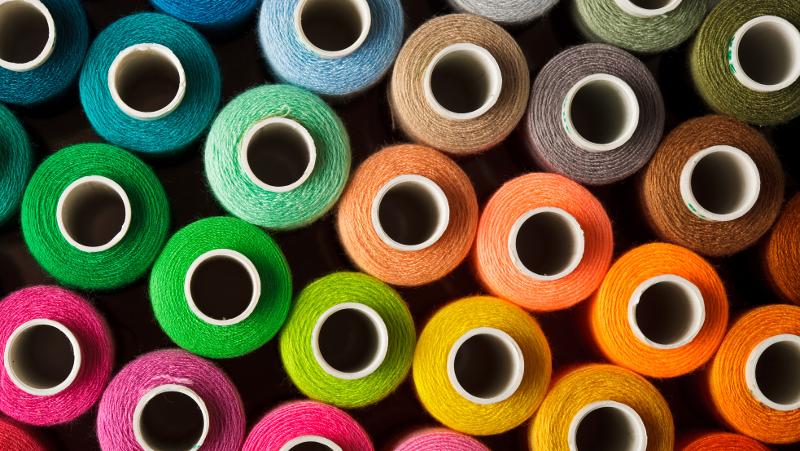
Exploitation of workers in the global garment industry is rife but Australia can lead the way to change, starting with the growers say QUT researchers, who also suggest Cotton Australia introduce labour rights criterion to the Australian Cotton Mark certification.
Funded by the Cotton Research and Development Corporation, the Strategies for Improving Labour Conditions Within the Australian Cotton Value Chain project has resulted in seven solutions developed as a collaboration between researchers at QUT, the University of Technology Sydney, and the University of Notre Dame Australia.
“Australia is the fourth biggest cotton exporter by quantity, behind the United States, Brazil and India, and ahead of the European Union,” Associate Professor Rowena Maguire from QUT’s School of Law said.
“While Australian cotton enjoys a reputation as a clean, green crop grown under decent working conditions, once it enters global value chains, all visibility is lost, and sustainable value is diminished.
“The manufacture of clothing is labour-intensive, employing around 60 million people worldwide. A key goal of our project is to ensure no Australian cotton enters value chains with labour abuses, so we have produced guidelines for farmers to adopt with the aim of nipping exploitation, including slave labour, in the bud.”
Associate Professor Erin O’Brien from QUT’s School of Justice says labour conditions for workers in textile and garment value chains is an area of continuous concern.

“Australian cotton is exported overseas, spun into yarn, knitted or woven into cloth, manufactured into garments and other products before arriving at a retail setting to be purchased by a consumer,” Associate Professor O’Brien said.
“All the way along the chain, from brands and retailers to manufacturers, and non-governmental organisations, there are people working tirelessly to address working conditions in a system that has no boundaries and fragmented governance.
“Our research asks how fibre producers can play a role and our final report offers seven solutions for the industry to consider, developed and refined through interviews with key industry stakeholders such as merchants, manufacturers, brands and retailers, and non-government organisations.
“These include ‘Downstream Due Diligence’ which places a duty of care upon sellers to identify, prevent, mitigate, and account for social and environmental risks arising from the use of their product within supply chains.
“Merchants could introduce new voluntary guidelines/codes of conduct or auditing/reporting requirements for customers, as well introduce mandatory due diligence obligations through contractual clauses with customers. Cotton Australia could act in an advocacy role with international arbitration bodies to socialise the idea of downstream due diligence.
“Internationally, there is already a shift towards this, and such a move will also decrease potential reputational risk associated with the revelation of human rights abuses in Australian cotton value chains and failure to meet human rights due diligence expectations.”
The researchers also propose extending the Australian cotton industry’s existing certification scheme.
“This scheme helps market Australian cotton on its sustainability credentials. We suggest the “chain of custody” checklist – which serves as proof of the cotton’s origin - include details on the working conditions during all the processes involved in turning it into garments,” Associate Professor Maguire said.
“Buyers already know Australian cotton isn’t tainted by child or forced labour, unlike cotton from many other exporter nations. This assurance could then be extended to the final products made from Australian cotton too.
“It would promote improved labour conditions along supply chains through increasing transparency and accountability around production processes, as well as set a minimum standard for the social credentials of Australian cotton products, with the rights of workers being centred.”
The other five steps recommended by the researchers are:
- Encourage transparency and supply chain visibility to serve as both an incentive and accountability measure for improved efforts.
- Traceability – using technology to trace the production of a product, its parts and materials, throughout its supply chains, to ascertain the provenance of the product.
- Reshoring and right-shoring to determine the ideal mix of local and overseas manufacturing.
- Fostering strategic partnerships and collaboration between supply chain actors to improve the resilience of supply chains, improve coordination and facilitate greater transparency.
- Collaborate with worker-driven initiatives to empowering workers to engage and influence programs intended to benefit them.
The full research team was comprised of: Professor Alice Payne (RMIT, Adjunct QUT), Associate Professor Rowena Maguire (QUT), Associate Professor Erin O’Brien (QUT), Ms Justine Coneybeer (QUT), Associate Professor Martijn Boersma (NDU), Associate Professor Timo Rissanen (UTS), and Ms Karina Kallio (UTS).
More information on the project is available online. The final report is available on QUT ePrints.
Media contact:
Amanda Weaver, QUT Media, 07 3138 3151, amanda.weaver@qut.edu.au
After hours: 0407 585 901, media@qut.edu.au




